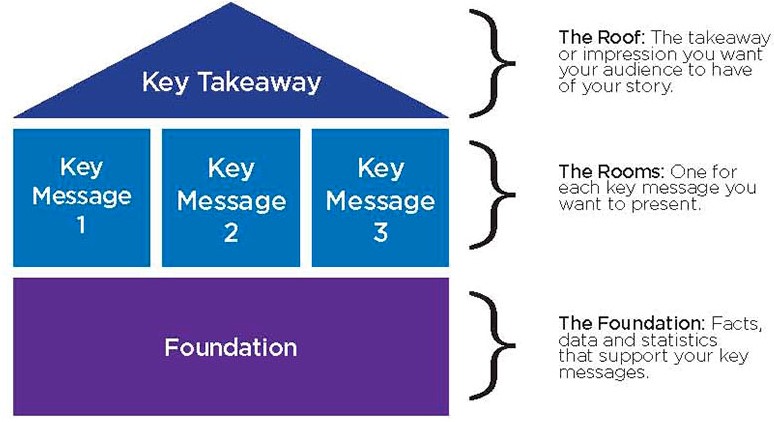

“You can have brilliant ideas, but if you can’t get them across, your ideas won’t get you anywhere,” Lee Iacocca, US business leader
Companies and brands spend enormous amounts of resources and time on crafting and communicating their messages across to their target audiences, including customers, regulators, staff and even shareholders.
Certainly, the changing media landscape presents great opportunities to communicate those messages more effectively.
Nevertheless, the game changer or the critical factor that truly moves the marketplace goes beyond the messages alone. The brand or corporate spokesperson plays an equal if not more pertinent role in making those messages meaningful and relevant to engage stakeholders, which in turn, will help achieve business goals.
History has shown that many great stories failed to inspire listeners because the storytellers were unable to convey them effectively and as such they cannot capture the imagination of the audience.
For example, brands will find it impossible to sell products if their key communicators can’t get the brand story across to the marketplace while companies won’t be able to establish a credible reputation in the market if they are unable to win over their stakeholders positively. At a company level, leaders who can’t articulate the organisation’s dreams to employees will not inspire action from team members.
In this regard, it is strange that many corporations or brands do not do enough to equip their leaders with the ability to communicate the right messages to the right audiences at the right time. After all, the “messengers” will make or break the link to your stakeholders.
Stories are not just fictions that creative people use to entertain people. All of us are story tellers. We tell stories every day – what happened on the way to work, how the children behaved last night.
In another context, how we interpret the past, how we perceive the present or how we foresee the future are all stories as well. This is true whether on a personal level or on a brand/organisational level. How we present a corporate message, or how we describe a product or service, are stories being told to the market. As such, leaders need to be good storytellers to engage the market.
Successful businesses and organisations don’t present facts because they understand one timeless truth – data can convince people, but it doesn’t move them to take action. To do that, you need to wrap information in an emotional story so that it connects with the human experience. Successful storytelling invites audiences to make meaningful connection with your brand or organisation and respond accordingly.

Story telling is not the silver bullet
In today’s context, there are a variety of platforms where brand stories can be delivered – through paid, earned, owned and shared spaces. Technologies such as AI and Big Data Analytics have enabled us to target our messages holistically. How and where to deploy messages are important considerations in any communications strategy.
Here’s a caveat – telling stories doesn’t automatically work in your favour. Stories do draw an emotional response. But telling the wrong stories, or even the right stories in the wrong way or at the wrong time may provoke emotions like irritation, boredom, bewilderment, anger, or other undesirable responses.
This is because people always filter what they see or experience through their own perceptions. It is the messenger’s responsibility to put the right perspectives across. I have always kept this saying in mind: “Leadership is Communication and Communication is Leadership”. You can’t separate one from another.
To elicit the desired emotional response, you need to be able to carefully craft a powerful and authentic story. For paid and owned media, you have time to craft an effective story and bring in experts to support you.
Things become more tricky when it comes to earned or shared platforms. One of the key complaints by brand or corporate spokespersons is that what they said in an interview or at a press conference had been misquoted or taken out of context by the media, resulting in a lot of bad press. This is compounded by social media, where such controversy is fodder for viral messages.
That’s when you need the skills to craft a suitable narrative at your fingertips, whether for mainstream or social media, as the spokesperson for your brand or organisation. Especially at times when bad press is spreading to thousands every minute on social media and you have almost zero time frame to craft your message.
How can you be a good storyteller?
The good news is, this skill can be learned by anyone.
Over the years, Perspective Strategies has had the opportunity to coach many corporate/brand spokespersons in the art of crafting a narrative. The key is to know how to navigate the media mine field calmly and to stay focused on business-building key messages. Here are a few things to keep in mind.
1. Understand the media
Spokespersons need to understand the characteristics of the media in order to effectively deal with them. For paid and owned media, you have full control over the narrative. But with earned media, you have to take control of the narrative with the story you had already prepared.
It’s always a good idea to try to understand the intentions of the journalist you are responding to. If he or she is friendly towards your point of view, you should stick to the narrative and not give them any reason to change their news angle. If you are facing someone who is unsympathetic or even hostile, the important thing to remember is to stick to the key message.
In the wild, wild west environment of social media, taking control of the narrative becomes even more important as you are not dealing with journalists who think about how to write a story, but masses of people who are observing, commenting and spreading the information in real time. You need to identify key influencers and leverage points which you can employ to help you get your message across effectively.
2. Prepare your narrative
Your role as the spokesperson for your brand/organisation is to be the custodian of facts. Your responsibility is to communicate them to your stakeholders in such a way that they can understand it clearly. As such, you have to make sure your content is presented clearly, positively and in simple words.
Some good questions to ask yourself when preparing your key messages are, “what is my communication objective?”, “what is the key message that I want my audience to remember?”, “what is the response that I want from my audience?”. Questions like these will put you in the frame of mind to craft a compelling story.
A good tool to use is the “Story house”. Just like when we were in school, our teachers always remind us to put our story house together before writing our essay. Tackling a media interview is no different – by putting the story house together, you are crafting your story in an organised and structured manner. This is especially important for live interactions with media, stakeholder meetings or on social media.
The Story House provides the framework to develop a clear and consistent message. It also helps you remember your key talking points, saves you the stress of having to think on your feet, and helps you refocus a discussion that had gone off the rails.

3. Take control and interact positively
Keep in mind that a telling a story is a dialogue, not a monologue. You are inviting your audience to participate in your narrative by giving their emotional response. As such, it is important to be able to draw them to the stage where they own the story you are telling.
The way you interact with the various media goes a long way to this end.
Here are very important do’s and don’ts to remember:
“Non-verbal” communication, such as tone or body language, is very important as well. The Mehrabian Communication Model highlighted that body language accounts for as much as 55% of a person’s perception of a message, while tone accounts for up to 38%. Actual words only make up of about 7% of influence on your audience! Things can take a bad turn if your audience perceives that your non-verbal communication is contradicting your words.
Telling your story well can inspire your audience to take and turn them into your passionate advocates. The ability to tell a good brand story may just be the most powerful tool in your communications.
The cost of not telling a compelling story is too high for an organization or brand to ignore. Good luck!
****
This article was first published in the Malaysian Business (October 2018).